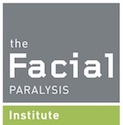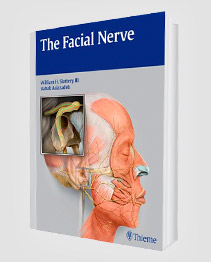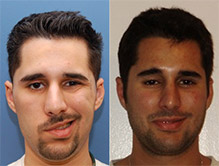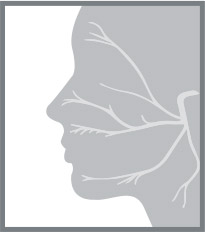When your face doesn’t move like it used to, it can be pretty unsettling. This usually happens because of something called a facial nerve injury. These injuries can range from minor issues that get better on their own to more serious problems needing a lot of medical help. Knowing about the different kinds of facial nerve injuries and what treatments are out there can make a big difference for anyone dealing with this. We’ll look at the various Types of facial Nerve Injuries & Treatments available today.
Understanding the Spectrum of Facial Nerve Injury
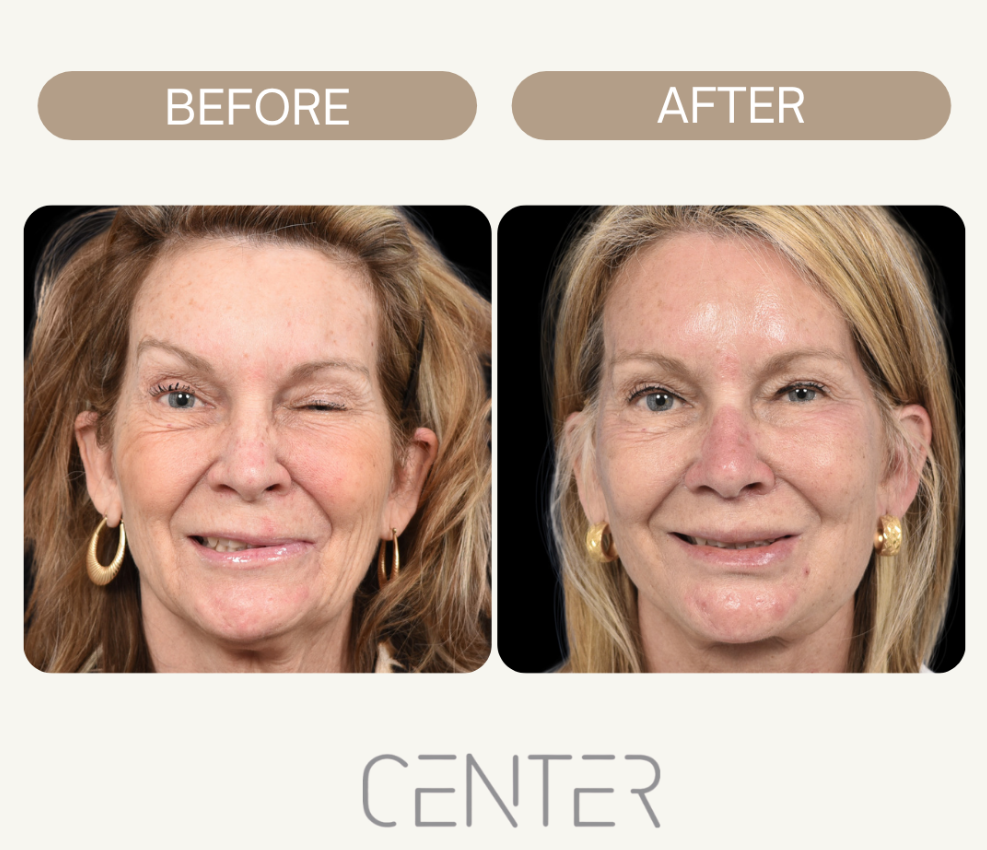
Alright, let’s talk about facial nerve injuries. It’s not just one thing; it’s more like a range, from a little tweak to a major problem. Knowing where you fall on that range is super important for figuring out what to do next. Basically, we’re looking at how much damage the nerve has taken, and that damage dictates how well—or if—it can bounce back.
First-Degree Nerve Injury: Transient Compression
Consider this the best case. Like when your foot sleeps, but for your face. Temporary nerve compression. This is usually caused by edema or pressure and heals fast. Normalcy will take weeks, not months. The good news? You’ll likely recover without synkinesis, those strange facial motions caused by nerve injury.
Second-Degree Nerve Injury: Prolonged Compression
This is more serious. Here, the nerve is compressed longer. Nerve fibers are destroyed yet the outer layer remains intact. Like cutting off the nerve’s food. Since the nerve must heal itself millimeter by millimeter, recovery takes months. Unfortunately, synkinesis is prevalent. When you smile, your eye may close or you may have other uncontrollable motions. It’s uncomfortable, but it indicates nerve healing.
Third-Degree Nerve Injury: Severe Damage and Transection
This injury is the worst. Severe nerve injury or total cutting occurs. Slow and incomplete recovery. If the nerve is cut, surgery is needed to repair it. Even after surgery, function may not recover. It’s difficult, but face movement and quality of life can be improved.
Managing facial nerve damage is difficult. The goal is to receive a good diagnosis, understand your injuries, and communicate with your doctor to build a personalized treatment plan. The marathon is long, but with the appropriate approach, you can advance.
Cause of Facial Nerve Impairment
Alright, let’s talk about what can actually cause your facial nerve to go haywire. It’s not always a straightforward answer, and sometimes it’s a combination of factors. Basically, something messes with the nerve’s ability to send signals to your facial muscles, and that’s when you start seeing issues.
Traumatic Incidents and Surgical Complications
Trauma is huge. Consider automobile accidents, falls, or direct facial blows. These can directly harm the facial nerve, swelling, bruising, or tearing it. Surgery, especially head and neck surgery, is risky. The facial nerve can be stretched, crushed, or cut during surgery, even by the most careful surgeons. This danger is always evaluated against the procedure’s benefits, but it’s worth knowing.
Infectious Agents and Inflammatory Responses
Infections can contribute. The facial nerve can be inflamed by herpes simplex and varicella-zoster viruses. Lyme disease, a tick-borne bacterial infection, is another. Infection-induced inflammation can compress the nerve, affecting function. Your immune system may assault the facial nerve, causing inflammation and injury. This occurs in various autoimmune diseases.
Idiopathic Onset: Bell’s Palsy
Many times, Bell’s palsy’s cause is unknown. Doctors term it idiopathic, meaning it occurs spontaneously without a cause. Sometimes there’s no cause, although viruses are often to blame. One side of the face is weak or paralyzed one morning. It can be alarming, but many people recover, though recovery times vary.
Remember that facial nerve disorders can have many causes, therefore a good diagnosis is essential to finding the appropriate treatment. Avoid self-diagnosis and see a doctor to undertake testing.
Clinical Manifestations of Facial Nerve Dysfunction
Alright, so let’s talk about what happens when your facial nerve isn’t working right. It’s not just about looks; it can mess with a lot of stuff. You might not even realize how much you use those little muscles until they decide to take a vacation.
Unilateral and Bilateral Facial Weakness
Okay, so imagine one side of your face just… giving up. That’s unilateral facial weakness. It’s like half your face forgot how to do its job. But sometimes, both sides decide to join the party, and that’s bilateral. It’s a whole different ballgame when both sides are affected.
- Drooping of the mouth on one side
- Difficulty closing one eye completely
- Trouble with facial expressions, like smiling or frowning
Flaccid Paralysis and Muscle Atrophy
Flaccid paralysis is when your muscles become limp and weak. Think of a wet noodle – that’s your face. And if it sticks around long enough, those muscles start to shrink. It’s called atrophy, and it’s not pretty. It can happen after facial trauma or surgery.
Synkinesis: Involuntary Facial Movements
This is odd. Synkinesis occurs when you move one portion of your face and another moves without your consent. Try smiling, and your eye squints. It’s like your facial muscles neglected to invite you to their party.
Synkinesis is frustrating. Imagine eating or talking with your face acting up. Besides being bothersome, it might make you uncomfortable and self-conscious.
Diagnostic Approaches for Facial Nerve Injuries
Figuring out what’s going on involves a few key steps. It’s not always straightforward, but with the right approach, you can get a clearer picture of the situation. Let’s walk through the common ways doctors assess these types of injuries.
Comprehensive Neurological Examination
First up is a thorough check-up. This is where your doctor looks at your facial movements, muscle strength, and reflexes. They’ll ask about your symptoms, when they started, and any possible causes like trauma or infection. This exam helps to pinpoint the extent and location of the nerve damage. It’s pretty basic, but it gives a solid foundation for further investigation. They might also take serial photographs to document your recovery.
Electrophysiological Studies: Nerve Conduction and EMG
Electrophysiological studies, such as nerve conduction studies (NCS) and electromyography (EMG), evaluate facial nerve function by measuring signal speed and muscle electrical activity. These tests differentiate between nerve damage and muscle disorders, determining the severity and location of nerve injury. EMG can also show muscle response to stimulation or atrophy.
Pharmacological Interventions for Nerve Recovery

Facial nerve injuries can be managed through various pharmacological interventions. Corticosteroids, such as prednisone, reduce inflammation around the nerve, allowing it to heal. Antiviral medications, like acyclovir or valacyclovir, combat viral infections and reduce their impact on the nerve. Botulinum toxin, or Botox, can manage synkinesis by selectively weakening overactive muscles, restoring balance and reducing unwanted movements. While not a cure, it can significantly improve quality of life. It requires repeated injections every few months, but many find it worthwhile. It’s essential to stay proactive, communicate openly with healthcare teams, and explore different therapies to find the best approach for your specific needs. facial paralysis and treatment options online.
Rehabilitative Strategies for Facial Nerve Function
It’s tough dealing with facial nerve issues, but there are definitely ways to get some function back. It’s not a quick fix, but with consistent effort, you can see improvements. Let’s look at some of the things you can do.
Targeted Physical Therapy Regimens
Physical therapy is a big deal when it comes to facial nerve recovery. It’s all about retraining those muscles and getting them to work together again. Think of it like teaching your face a new language. You’ll be doing exercises that focus on specific movements, like smiling, frowning, and raising your eyebrows. The goal is to improve facial symmetry and coordination. A therapist will guide you through these exercises, making sure you’re doing them correctly and not creating any bad habits. physical therapy can really make a difference.
Speech and Swallowing Rehabilitation
Facial nerve damage can mess with your ability to speak clearly and swallow properly. It’s frustrating, but speech therapy can help. You’ll work on exercises that strengthen the muscles involved in speech and swallowing. This might include practicing specific sounds, words, and phrases. You might also learn techniques to make swallowing easier and safer, reducing the risk of choking or aspiration. It’s all about regaining control over those essential functions.
Ocular Protection and Care
One of the trickiest things about facial nerve issues is that it can affect your ability to close your eye properly. This leaves your eye vulnerable to dryness, irritation, and even damage. So, protecting your eye is super important. Here are a few things you might need to do:
- Use artificial tears regularly to keep your eye lubricated.
- Wear glasses or goggles during the day to shield your eye from wind and sun.
- Use a moisture chamber at night to prevent your eye from drying out while you sleep.
Taking care of your eye is a daily commitment, but it’s worth it to prevent complications and protect your vision.
Surgical Modalities for Nerve Repair and Reconstruction

So, you’re at the point where surgery is on the table for your facial nerve injury. It’s a big step, but there are some pretty cool options out there to help get things working again. Let’s break down what those look like.
Direct Nerve Repair and Grafting Techniques
If the nerve is cut clean, a direct repair is the ideal scenario. Think of it like reconnecting a wire. But sometimes, there’s a gap. That’s where grafting comes in. A nerve graft is basically borrowing a piece of nerve from somewhere else in your body (usually a sensory nerve, so you don’t lose important function) and using it to bridge the gap. It’s like a detour route for the nerve signals. If you are considering this option, you may want to learn more about facial nerve graft and transplant surgery.
Nerve Transfers for Functional Restoration
What if the original nerve is too damaged to repair or graft? That’s where nerve transfers come in. This involves taking a less important, nearby nerve and rerouting it to power the facial muscles. It’s like rewiring a circuit to get the lights back on. It’s not a perfect solution, but it can provide significant improvement in facial movement.
Static Suspension and Muscle Transfers
In severe nerve damage, direct nerve repair or transfer may not be possible. Static suspension or muscle transfers may be considered, improving symmetry and restoring movement. The surgical approach depends on the injury type, extent, and overall health, and a conversation with the surgeon is necessary to determine the best course of action.
If you’re dealing with nerve damage, knowing your options for fixing it is super important. There are different ways doctors can help nerves heal or even rebuild them. Want to learn more about these amazing medical fixes? Check out our website for all the details on how we can help with nerve repair and reconstruction.
Wrapping Things Up
When it comes to facial nerve injuries, there’s a lot to think about. It’s not just one thing; it can be anything from a mild pinch to a full-on cut. How well someone gets better really depends on what kind of damage happened and how bad it was. Sometimes, the nerve can fix itself, but other times, you might need surgery or other treatments to get things working again. The main takeaway is that getting help early and figuring out exactly what’s going on with the nerve is super important for getting the best results. It’s a complex area, but with the right care, people can often see a lot of improvement.
Request your consultation with Dr. Azizzadeh today
Call us at (310) 657-2203 to schedule an appointment.
Schedule a Consultation